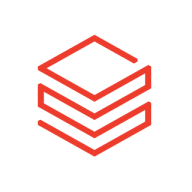

Databricks and Amazon Kinesis both compete in the data analytics and streaming domain. Databricks appears to have the upper hand in scalability and integration owing to its versatile Lakehouse architecture, while Amazon Kinesis leads in real-time streaming capabilities within AWS environments.
Features: Databricks offers large-scale analytics with built-in optimization, flexible programming options, and seamless integration with various environments. Its Lakehouse architecture and collaborative features resonate with data professionals. Amazon Kinesis excels in real-time data streaming, capturing, processing, and analyzing large data volumes. Its integration and management services simplify streaming processes significantly.
Room for Improvement: Databricks could improve visualization capabilities, data source integration, and machine learning libraries. Pricing and clearer documentation are also points that users suggest need attention. For Amazon Kinesis, better documentation, scalability enhancements, and more automation of functions are areas for improvement. Users also seek more data retention options and reduced latency.
Ease of Deployment and Customer Service: Both Databricks and Amazon Kinesis are mostly deployed on public cloud environments. Databricks supports hybrid and multi-cloud deployments with good customer service, although it has a learning curve for technical expertise. Amazon Kinesis integrates smoothly within AWS and allows straightforward deployment for real-time applications but requires familiarity with AWS systems.
Pricing and ROI: Databricks is considered expensive, suitable for enterprises with a focus on batch processing and data management, enabling ROI through infrastructure cost savings. It offers flexible pricing models but requires efficient use to justify costs. Amazon Kinesis provides competitive pricing for streaming, with cost-effectiveness noted in comparison to building separate structures, enhancing ROI as part of AWS without extra hardware.
With Lambda, there is no need for data transfer charges, which is beneficial for less frequent workloads.
For a lot of different tasks, including machine learning, it is a nice solution.
When it comes to big data processing, I prefer Databricks over other solutions.
We receive prompt support from AWS solution architects or TAMs.
Whenever we reach out, they respond promptly.
As of now, we are raising issues and they are providing solutions without any problems.
I rate the technical support as fine because they have levels of technical support available, especially partners who get really good support from Databricks on new features.
Amazon Kinesis provides auto-scaling with streams that handle large volumes well.
I would rate the scalability of Amazon Kinesis as a nine.
The patches have sometimes caused issues leading to our jobs being paused for about six hours.
Databricks is an easily scalable platform.
I would rate the scalability of this solution as very high, about nine out of ten.
I would rate the stability of Amazon Kinesis as high, giving it a 10.
They release patches that sometimes break our code.
Although it is too early to definitively state the platform's stability, we have not encountered any issues so far.
Databricks is definitely a very stable product and reliable.
There is no lack of functions in Amazon Kinesis. Functionality-wise, we feel it's complete.
Amazon Kinesis could improve its pricing to be more competitive, especially for large volumes.
Adjusting features like worker nodes and node utilization during cluster creation could mitigate these failures.
We prefer using a small to mid-sized cluster for many jobs to keep costs low, but this sometimes doesn't support our operations properly.
We use MLflow for managing MLOps, however, further improvement would be beneficial, especially for large language models and related tools.
Amazon Kinesis and Lambda pricing is competitive, but we noticed that scaling and large volumes could potentially increase costs significantly.
It is not a cheap solution.
Lambda's scalability, seamless integration with other AWS services, and support for multiple programming languages are very beneficial.
Amazon Kinesis integrates easily with the AWS environment.
Databricks' capability to process data in parallel enhances data processing speed.
The platform allows us to leverage cloud advantages effectively, enhancing our AI and ML projects.
The Unity Catalog is for data governance, and the Delta Lake is to build the lakehouse.
| Product | Market Share (%) |
|---|---|
| Databricks | 10.8% |
| Amazon Kinesis | 6.0% |
| Other | 83.2% |

| Company Size | Count |
|---|---|
| Small Business | 8 |
| Midsize Enterprise | 10 |
| Large Enterprise | 9 |
| Company Size | Count |
|---|---|
| Small Business | 25 |
| Midsize Enterprise | 12 |
| Large Enterprise | 56 |
Amazon Kinesis makes it easy to collect, process, and analyze real-time, streaming data so you can get timely insights and react quickly to new information. Amazon Kinesis offers key capabilities to cost-effectively process streaming data at any scale, along with the flexibility to choose the tools that best suit the requirements of your application. With Amazon Kinesis, you can ingest real-time data such as video, audio, application logs, website clickstreams, and IoT telemetry data for machine learning, analytics, and other applications. Amazon Kinesis enables you to process and analyze data as it arrives and respond instantly instead of having to wait until all your data is collected before the processing can begin.
Databricks offers a scalable, versatile platform that integrates seamlessly with Spark and multiple languages, supporting data engineering, machine learning, and analytics in a unified environment.
Databricks stands out for its scalability, ease of use, and powerful integration with Spark, multiple languages, and leading cloud services like Azure and AWS. It provides tools such as the Notebook for collaboration, Delta Lake for efficient data management, and Unity Catalog for data governance. While enhancing data engineering and machine learning workflows, it faces challenges in visualization and third-party integration, with pricing and user interface navigation being common concerns. Despite needing improvements in connectivity and documentation, it remains popular for tasks like real-time processing and data pipeline management.
What features make Databricks unique?
What benefits can users expect from Databricks?
In the tech industry, Databricks empowers teams to perform comprehensive data analytics, enabling them to conduct extensive ETL operations, run predictive modeling, and prepare data for SparkML. In retail, it supports real-time data processing and batch streaming, aiding in better decision-making. Enterprises across sectors leverage its capabilities for creating secure APIs and managing data lakes effectively.
We monitor all Streaming Analytics reviews to prevent fraudulent reviews and keep review quality high. We do not post reviews by company employees or direct competitors. We validate each review for authenticity via cross-reference with LinkedIn, and personal follow-up with the reviewer when necessary.